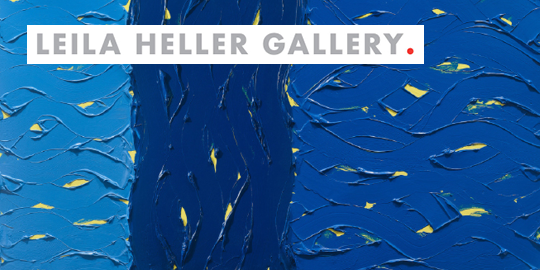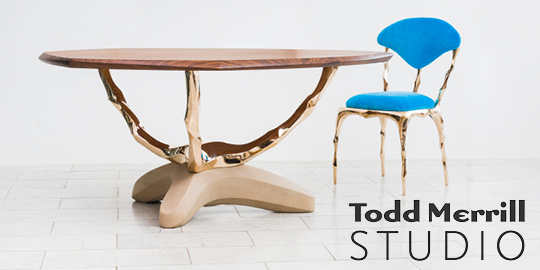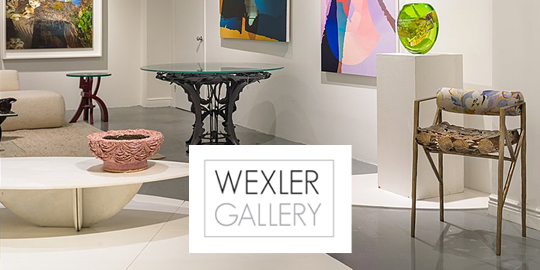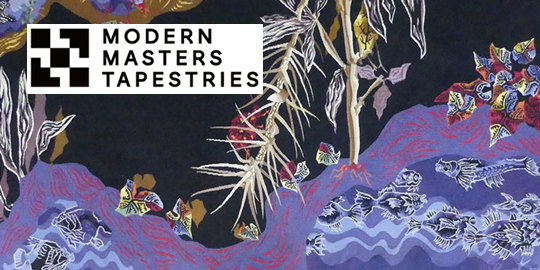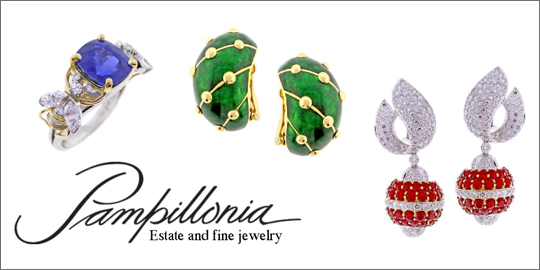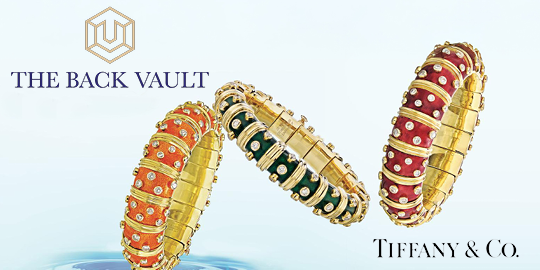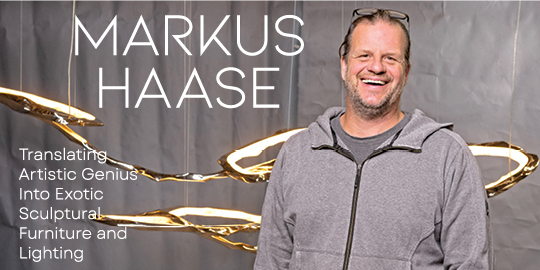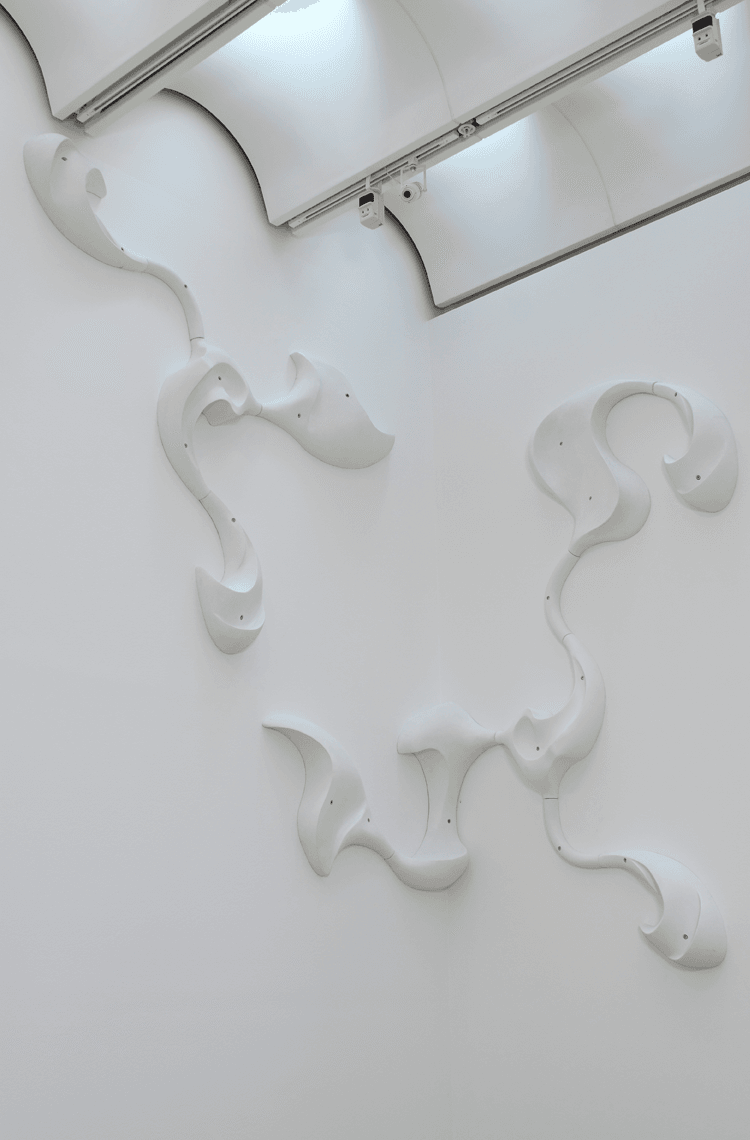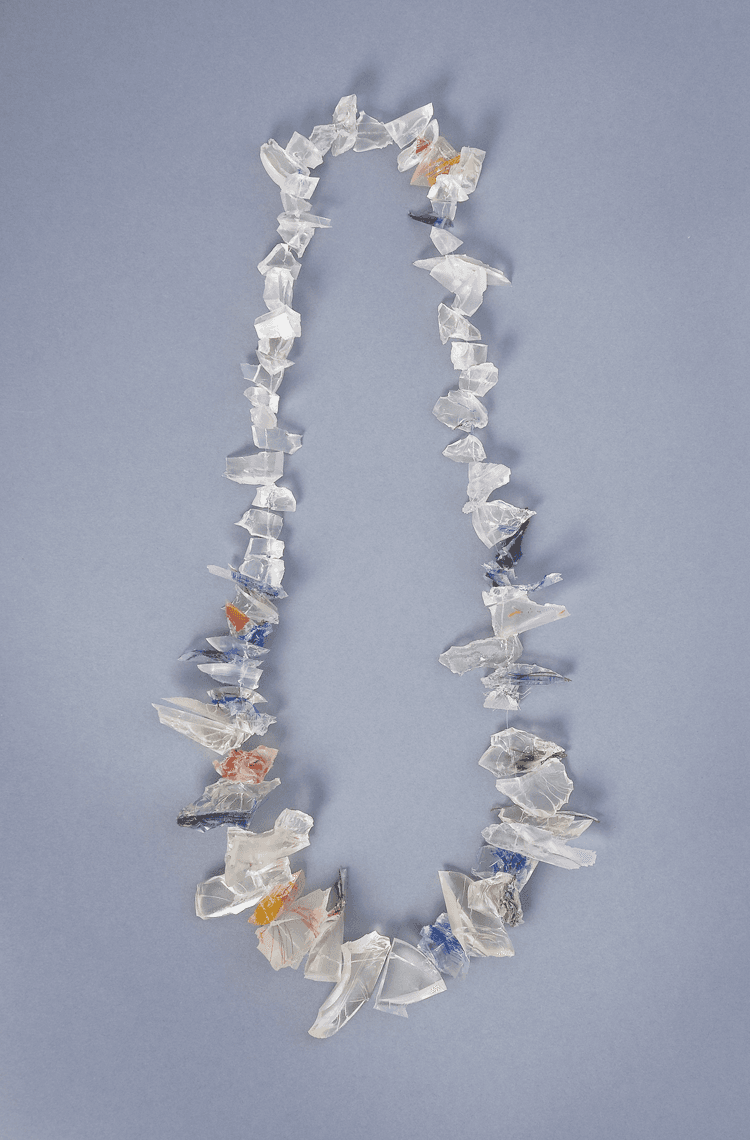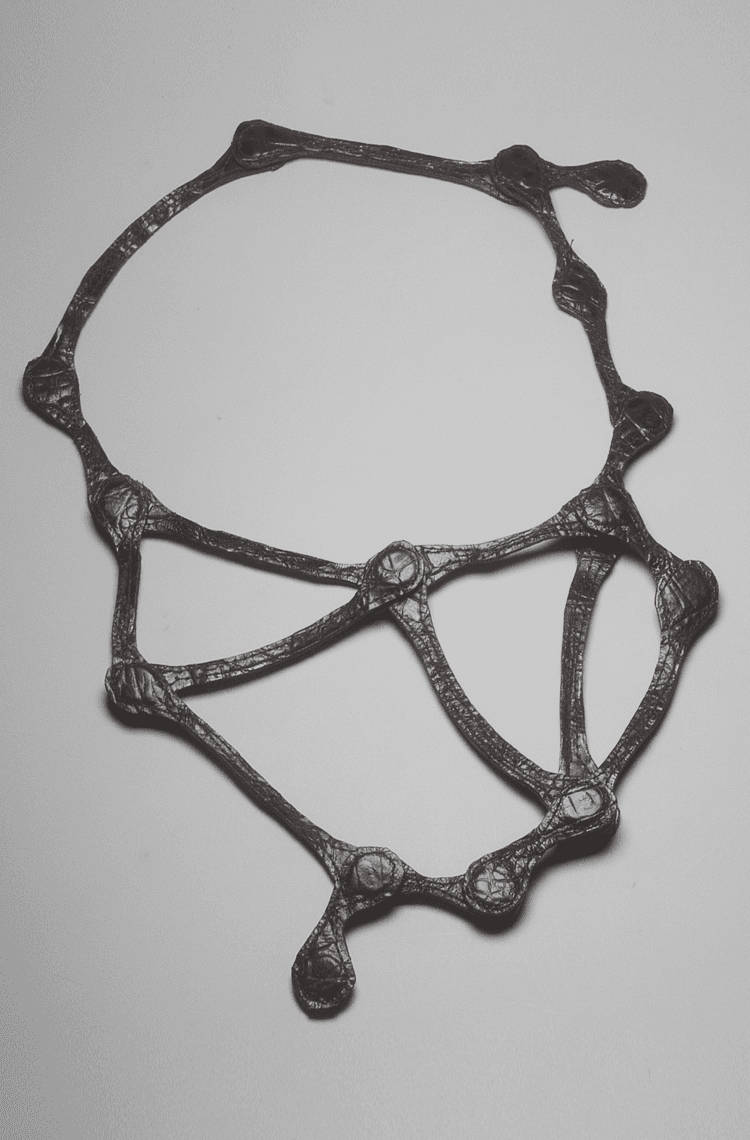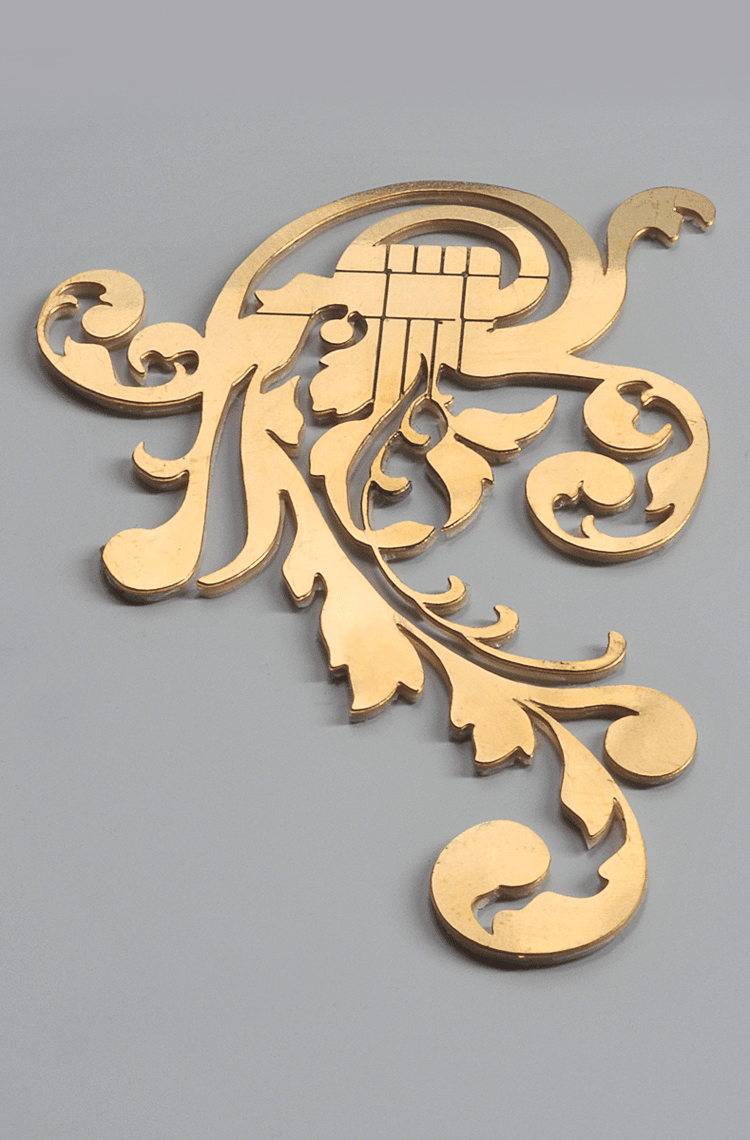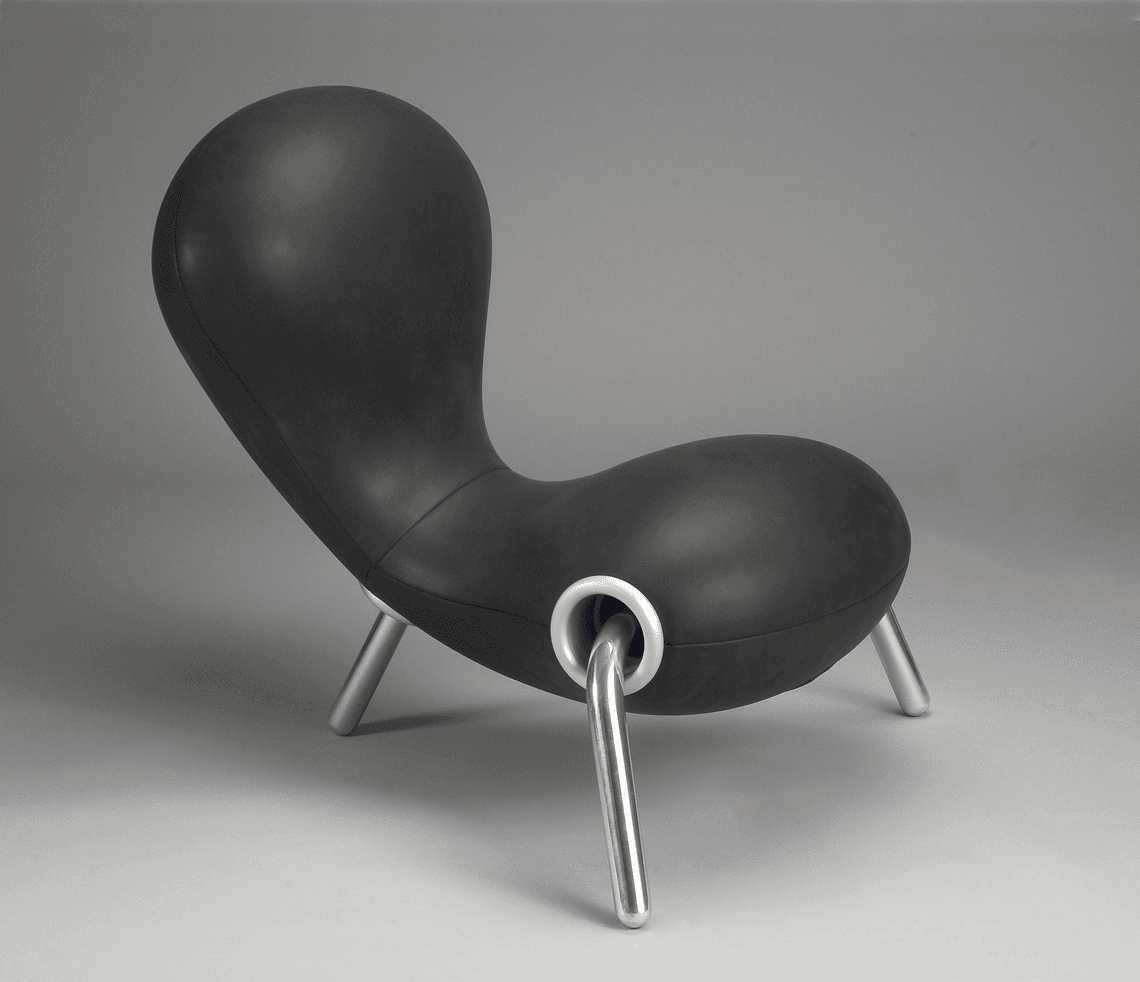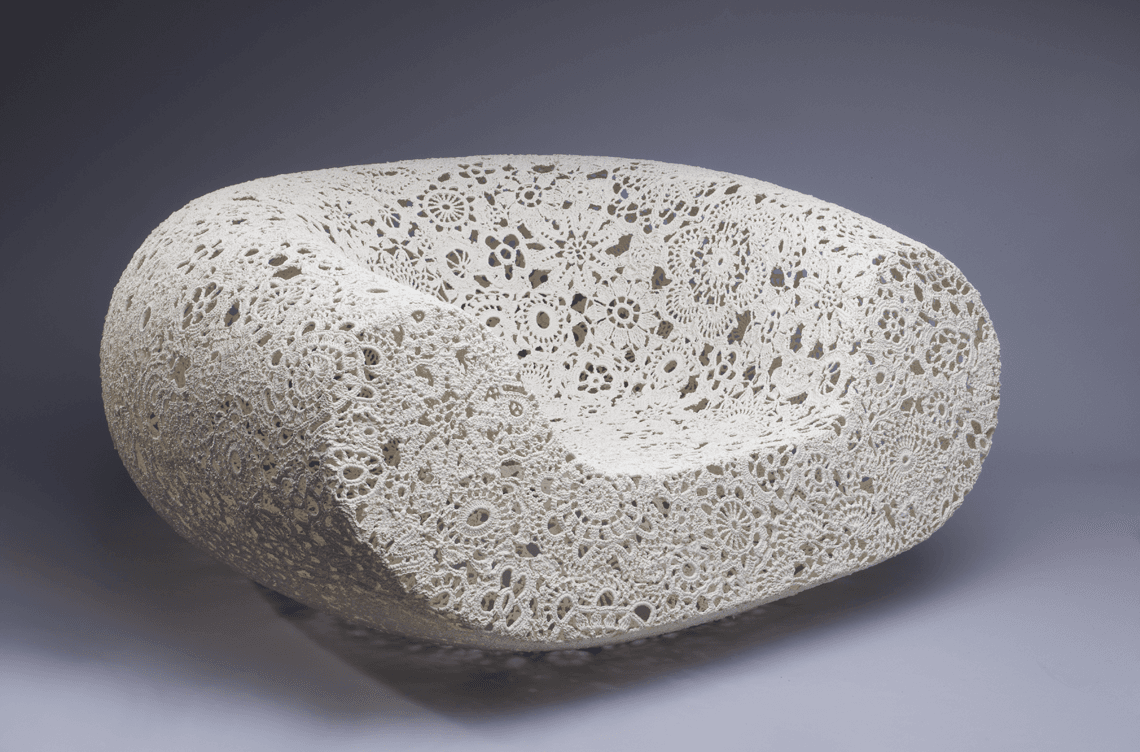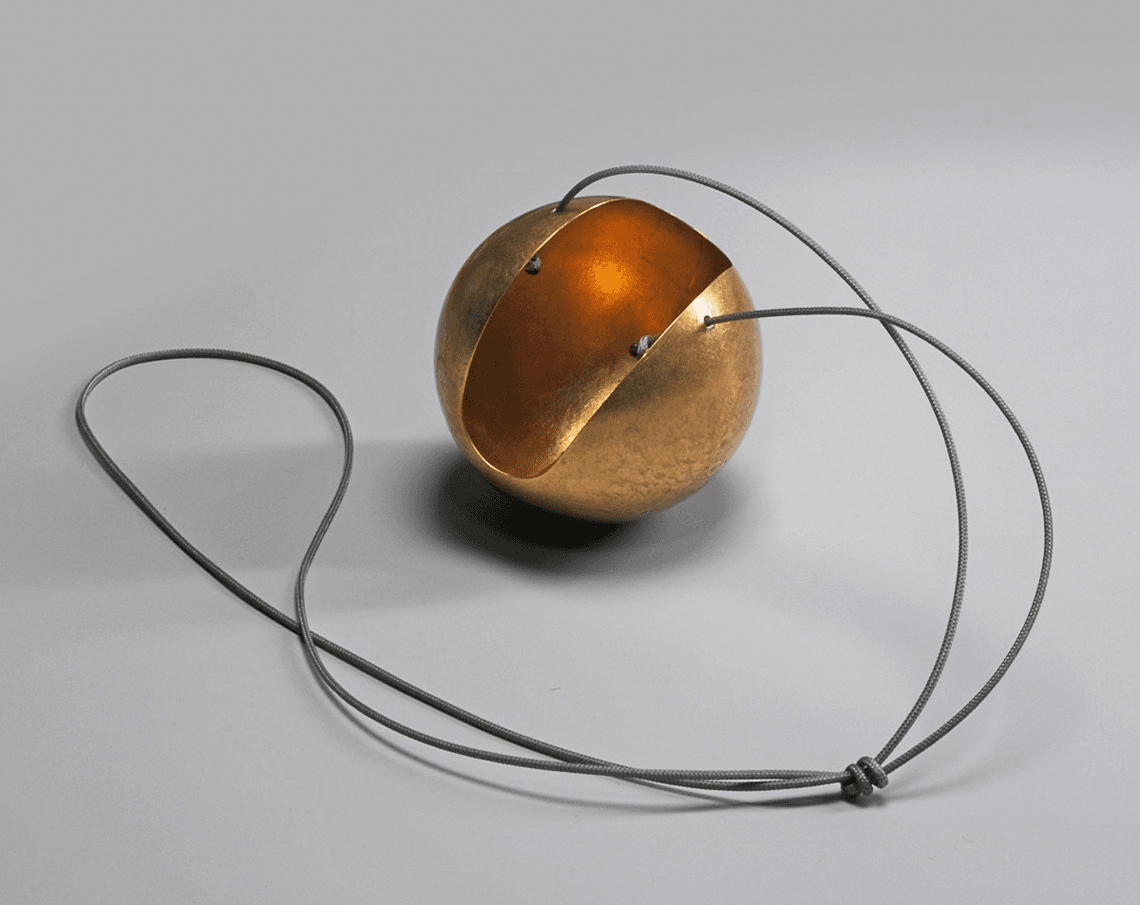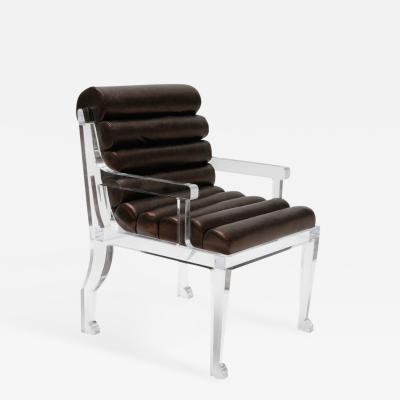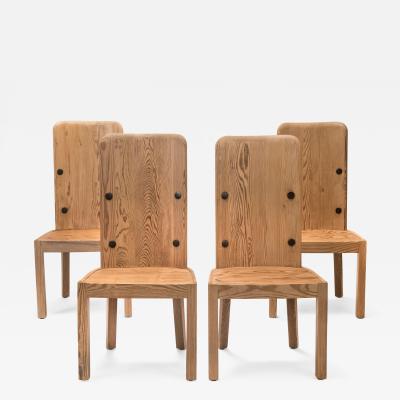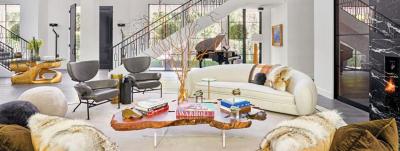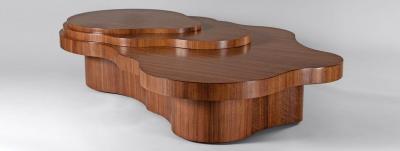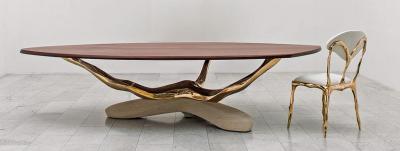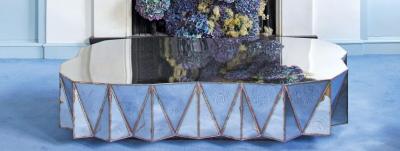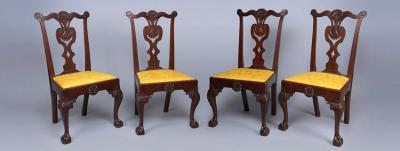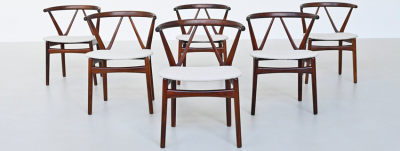Bangles to Benches: Contemporary Jewelry and Design
Contemporary jewelry and design represent both the ideas of the moment (innovative materials, technology, and manufacturing processes) and remnants of the past (traditional forms, processes, and natural materials). Featuring works ranging from high-tech pieces created on a computer to lyrical, handcrafted, low-tech designs in traditional media, the following examples, drawn primarily from the High Museum of Art’s renowned contemporary design collection, reflect the international nature of the field. These pieces were part of the exhibition Bangles to Benches: Contemporary Jewelry and Design.
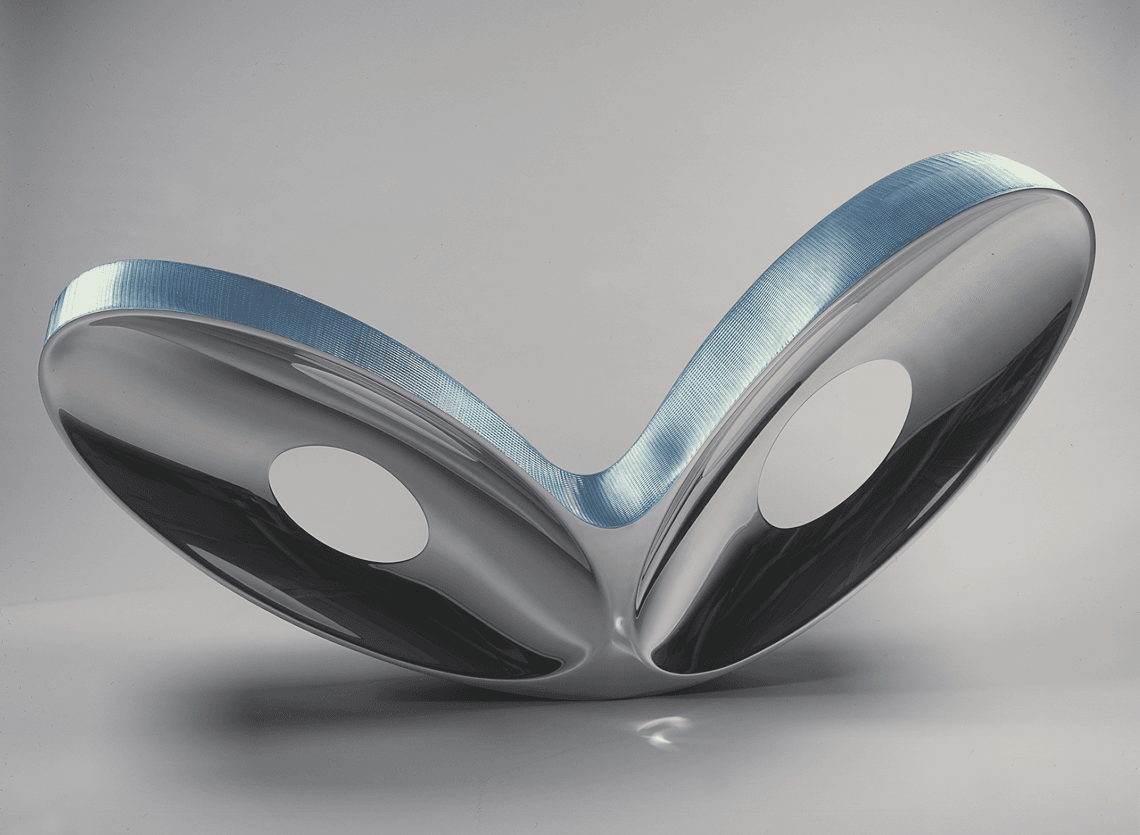
- Fig. 3: Ron Arad (British, born Israel, 1951), designer, Galerie Mourmans, Maastricht, Netherlands, maker, Blo-Void I, 2006. Mirror-polished aluminum alloy and anodized woven-aluminum mesh. High Museum of Art (2007.121); purchase through prior acquisition from Beth and Sam Scarboro in loving memory of Grace and Dewey D. Scarboro, and bequests of Kate Session Marsh and Mrs. Norman Powell Pendley. Photograph High Museum of Art.
The exhibition looked at nine contemporary designers, illustrating a range of their work, from inventive jewelry to chairs and climbing walls. The commonality amongst all of the work is the role of the user, whether the object is worn on the body or is for the body. The designs are not limited by size; from minimal earrings that can be altered by the wearer (Fig. 1) to Joris Laarman’s full-scale Ivy climbing wall (Fig. 2), the shifts in scale demonstrate how the designers explore many variables across multiple forms. How and what they create offers a taste of what is possible and explores the creative dexterity found in many contemporary designers’ repertoires today.
London-based designer Ron Arad is well known for his innovative architecture, industrial design, and limited-edition studio pieces, such as Blo-Void I (Fig. 3) from the High’s collection. As a professor of product design, Arad continues to push the boundaries of material and process by combining precious metals and plastics with cutting-edge technology. His use of transparent materials and curved, hollow spaces in both his furniture and jewelry design reveals his keen interest in visualizing volume. These concepts are exemplified by the Arad works highlighted in the exhibition: Blo-Void I, Hot Ingo earrings and Silicon necklace (Fig. 4). Handmade by the artist rather than by a machine, Arad’s unique, playful necklace made of silicon explores the transparent properties of a material that belies its true characteristics. With the earrings, Arad combines precious metals with cutting-edge technology to create an extendable, flexible spiral through 3-D printing technology that allows a set of earrings to be designed according to the wearer’s desire.
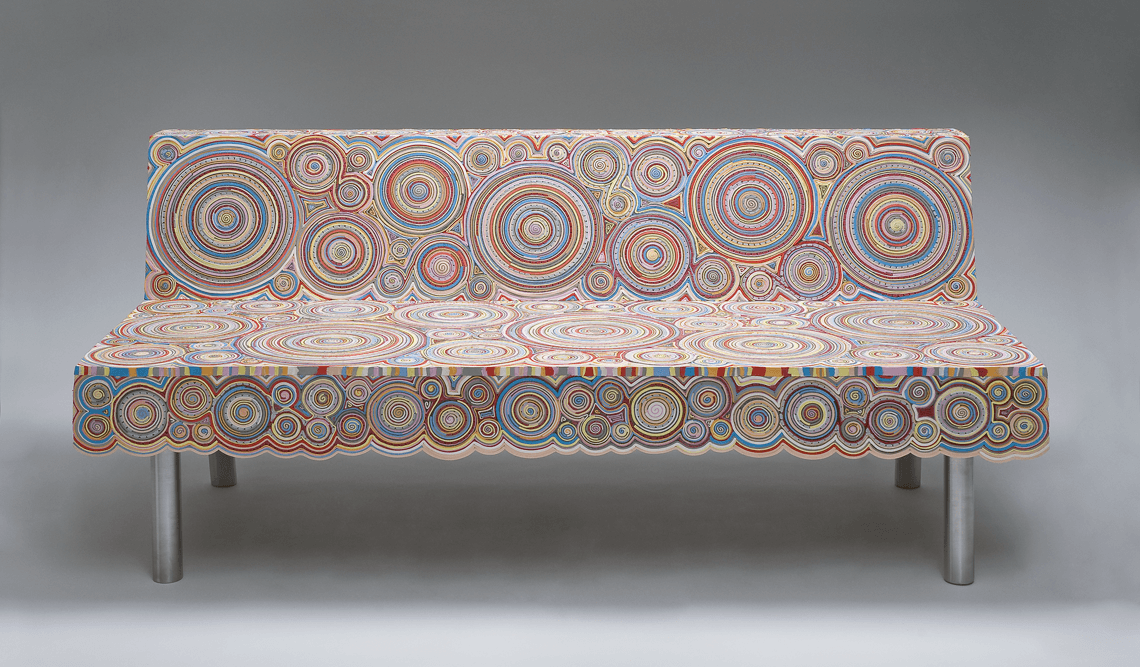
- Fig. 5: Fernando Campana (Brazilian, b. 1961) and Humberto Campana (Brazilian, b. 1953), designers; Estudio Campana, Brazilian, founded 1983, manufacturer, Sushi sofa, designed 2010, manufactured 2012. Carpet, rubber, EVA, fabric, stainless steel. High Museum of Art (2012.62); purchase in honor of Katherine Hebert, Art Partners President, 2012-2013, with funds from the Decorative Arts Endowment. Photograph by Michael McKelvey.
The Brazilian brothers Fernando and Humberto Campana create works that not only celebrate their national spirit and self-described “zest for life,” but are made primarily from found, common, or recycled materials. The Campana brothers first examine the inherent qualities of these modest, forgotten substances to determine how the objects can be best transformed, and only then do they address issues of form and function. The Sushi sofa (Fig. 5)—comprising rubber, fabric, and carpet—and the interchanging, modular leather-and-magnet pieces of 2010’s Bone Structures necklace (Fig. 6), adhere to this design philosophy.
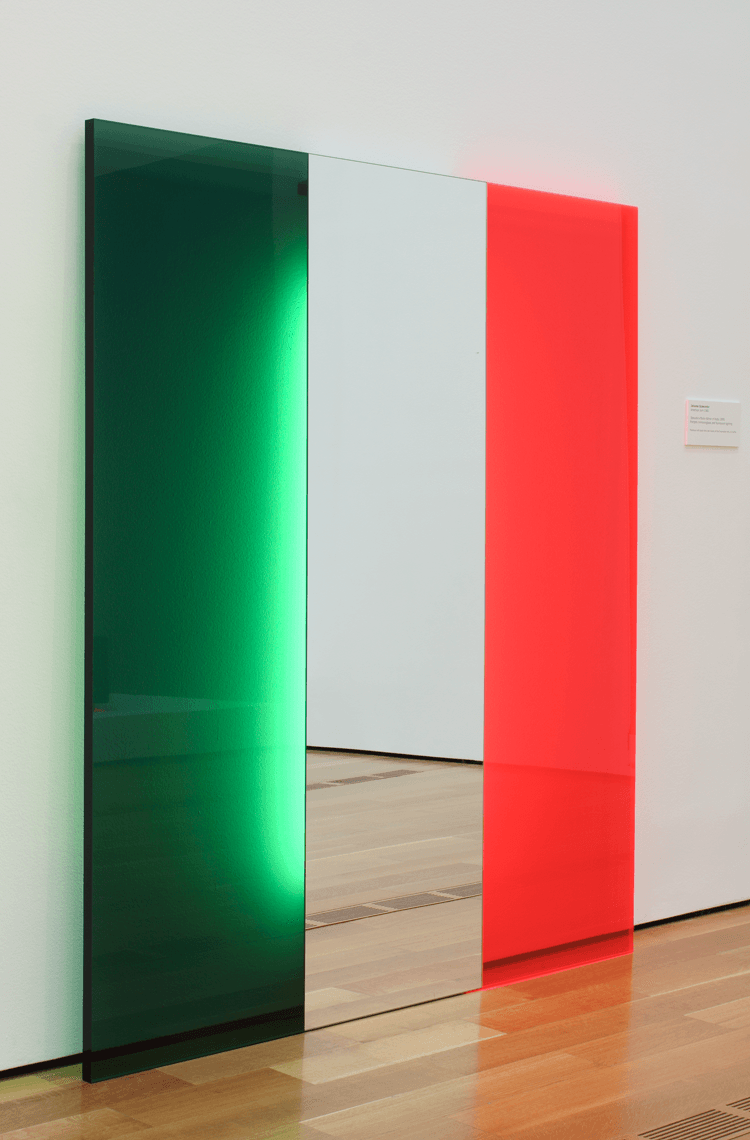
- Fig. 8: Johanna Grawunder (American, born 1961), designer, BBWL, Italian, maker, Specchio d’Italia (Mirror of Italy), 2005. Perspex, mirrored glass, fluorescent lighting. High Museum of Art (2010.305); purchase with funds from the Friends of the Decorative Arts and the Decorative Arts Endowment. Photograph by Mike Jensen.
Mexican designer Héctor Esrawe’s pieces exhibit dynamic movement, experimentation of form, and use of traditional materials, such as wood and brass. The continuous, zoomorphic, and rhythmic repetition of Esrawe’s 2013 jewelry series titled Vestigios (Remains) relates visually to the ideas explored in his lively and appropriately titled Centipede III (Fig. 7) bench. The bench delights with its playful rhythms and repetition of forms inspired by the eponymous insect. Inspired by the spirit of excavation, the Vestigios pieces (first made by 3-D printing techniques before being cast in brass) are reminiscent of fossils or remains. When worn, these jewelry “bones” evoke altered anatomical structures and represent a historical record of the use of 3-D printing as it is used today.
American Johanna Grawunder’s design career began in 1985 when she apprenticed for design legend Ettore Sottsass, Jr., before opening her own practice in 2001. Active in both architecture and design, Grawunder is mostly recognized for her use of simple materials in uncomplicated forms, partnered with bright lights. Vibrant and unmistakably striking, her designs redefine luxury by utilizing reflection, simplicity, and color, exemplified by her Cylinder jewelry series (2012) and Specchio d’Italia (Fig. 8).
World-renowned architect and designer Zaha Hadid has been realizing highly influential building commissions since she established her London-based practice in 1980. Defined by her signature style of fluid, revolutionary forms, Hadid’s work employs unexpected shapes for traditional objects, such as jewelry or the Towers tea and coffee service (Fig. 9). With both functionality and display in mind, Hadid carefully reconsidered ergonomic forms inspired by nature in order to create the elegant contours seen in these works. The Glace Collection (Fig. 10), commissioned by Atelier Swarovski, enabled Hadid to use Swarovski crystals to emphasize her fascination with light and reflection in small scale jewelry designs.
Dutch designer Joris Laarman is at the forefront of contemporary design with conceptual, experimental creations, merging technology with the life sciences to create functional objects of unexpected natural beauty. The Ivy climbing wall is simultaneously an elegant architectural element and a means of exercise. The intricate, laser-cut, organic curves of the Credit brooch (Fig. 11) camouflage a working credit card. The same curvilinear, amoebic forms seen in the climbing wall and the Credit brooch reappear in the Heatwave radiator (2007) and its 2003 prototype, transforming an otherwise unappealing room fixture into a work of art. The idea of functionality and an ornate, highly designed form is evident in much of Laarman’s work.

- Fig. 12: Joris Laarman (Dutch, born 1979), designer Joris Laarman Lab, Amsterdam, established 2004, maker, Abby brooch, 2011. Voxels, glue. Courtesy of Joris Laarman Lab. Photograph courtesy of Joris Laarman Lab Shown in background: Original inspiration for the brooch, Megavoxel table from the High Museum of Art’s 2011 Modern By Design exhibition. This commissioned Digital Matter installation by Joris Laarman Lab featured the “Abby” robot building furniture from the same voxels.

- Fig. 14: Marc Newson (Australian, born 1963), designer, chi ha paura, Amsterdam, founded 1996, manufacturer Orgone 2 (1994) and Orgone 1 (1992). Sterling silver 925 and blue and red enamel. High Museum of Art (2012.242; 2013.12); gift of Sara and Marc Benda, and purchase with funds from the Friends of Decorative Arts and Design. Photograph by Michael McKelvey.
Another Laarman design featured is his 2011 Abby brooch (Fig. 12). Comprised of tiny voxels (volumetric metallic pixels), the Abby brooch is a lasting tribute to the High’s commissioned 2011 Laarman project entitled Digital Matter. Installed in the High’s Modern by Design exhibition, the project featured an orange robot called “Abby” constructing a Rococo-inspired table out of voxels before the visitors’ eyes. This brooch is made from these same pixels in the shape of a flower from the table and exemplifies Laarman’s use of innovative materials and processes.
In his furniture and jewelry creations, Australian-born Marc Newson’s fascination with light, reflection, hollow forms, and negative space is readily apparent. In the playful Embryo chair prototype (Fig. 13) from the High’s collection, the hollow leg opening, unusual material (neoprene as upholstery), and swollen curves demonstrate Newson’s continued dedication to his biomorphic language, sophisticated forms, and diversity of materials. Many of these ideas are demonstrated in the Orgone 1 bracelet (Fig. 14) and Orgone 2 ring.
Inspired by Pop art and Minimalism, Italian design legend Ettore Sottsass, Jr. became a leader of the postmodern movement. He founded the irreverent Memphis design collective in the early 1980s, claiming that his work evoked what he termed “semantic confusion”—an amalgamation of ironic and humorous elements with lively colors, patterns, unusual forms, and varied materials. In the late 1960s Sottsass began using brightly colored plastic laminate—a new material typically associated with countertops—to surface furniture designs, as seen on the monolithic, austere Superbox (Fig. 15). This mix of incongruous materials, bold color, and form continues in his jewelry design, as in the combination of plastic monofilament with gold and semiprecious stones on an untitled 1984 necklace.
Dutchman Marcel Wanders has played a vital role in developing new practices and approaches to Dutch design since the establishment of the highly influential group Droog Design in 1993. Just as Sottsass changed the approach to design in the early 1980s with the Memphis collective, the Amsterdam-based Droog group did so again in the 1990s under the leadership of Wanders, Hella Jongerius, and Tejo Remy. Wanders’ furniture and jewelry show a range of materials, process, intent, and form, while maintaining an element of surprise in each piece. The Crochet chair prototype (Fig. 16) formed of hand-crocheted pieces dipped in resin, is practically weightless and offers a contemporary twist, wherein the upholstery—the traditionally decorative element—also functions as the structural element. Nose (Fig. 17) adheres to these ideas of surprising, playful twists to traditional objects and materials; made of gold-plated silver, is it a necklace or a clown nose? The user has the power to decide. The deceptive simplicity fails to suggest the multiple ways one can wear and interpret the piece.
The selected works in Bangles to Benches emphasize the incredible breadth and range of these international designers’ intellect and creative prowess. Over the last seven years, the High’s decorative arts and design department has grown the collection of works by these designers to reinforce and explore ideas of production, material, intent and form. By showcasing wearable designs by these artists alongside their works in other mediums, the High celebrates the breadth of the influence of these artists and also show how their works have come to shape the Museum’s permanent collection.
The exhibition Bangles to Benches: Contemporary Jewelry and Design was on view at the High Museum of Art from October 2013 through August 2015.
—
Sarah Schleuning is curator of decorative arts and design at the High Museum of Art, Atlanta, Georgia.
This article was originally published in Antiques & Fine Art magazine. AFA is affiliated with Incollect.


